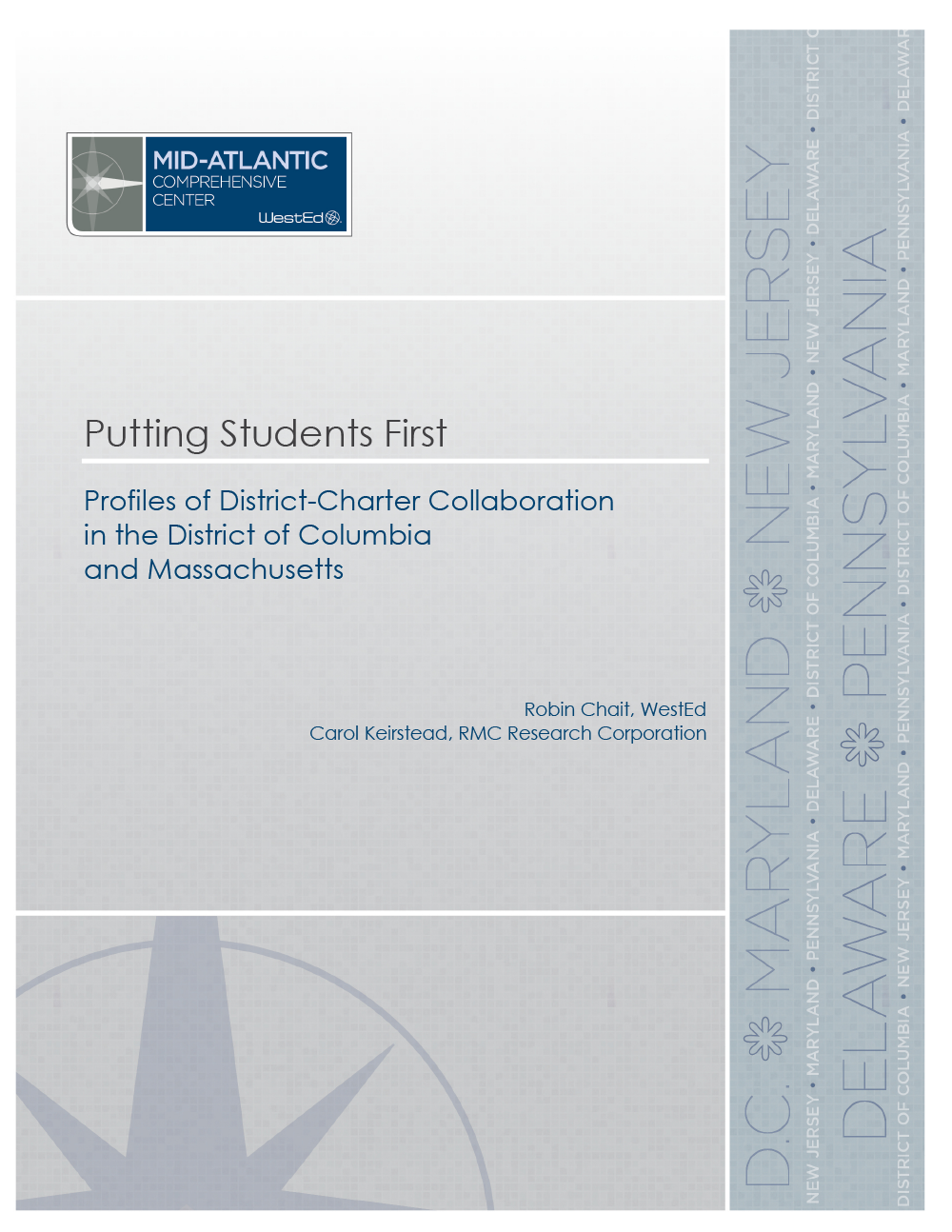Bridging the Divide: Collaboration Between Traditional Public Schools and Charter Schools
Posted on

Guest blog written by Robin Chait, Senior Charter Schools and School Choice Policy Associate at WestEd.
In many states and communities, traditional public and charter school sectors operate as silos, to the detriment of students and their families. Breaking down those silos in favor of cross-sector collaboration has the potential to improve the quality of both types of schools and help families navigate their school choice options. Although successful collaboration is complex — requiring a major investment of time and resources for all involved — the payoff can be significant, with greater opportunities for educators to share information and best practices and for developing systems and processes that make school choice a reality for all families.
There are many examples nationwide of educators and other education stakeholders successfully working across sectors to meet the needs of students and families. In both the District of Columbia and Massachusetts, for example, cross-sector initiatives are currently implemented and are showing promising results. In DC, leaders engaged both sectors in creating My School DC, a common application and lottery system. In Boston, city leaders created a compact to coordinate across traditional public schools, charter schools, and Catholic schools. In both places, collaboration is leading to more frequent sharing of best practices across the sectors. You can read more about these initiatives in the profiles, Putting Students First: Profiles of District-Charter Collaboration in the District of Columbia and Massachusetts.
On January 30, the Mid-Atlantic Comprehensive Center convened representatives from the mid-Atlantic states to learn about and share strategies for collaboration between traditional public and charter schools. In talking with cross-sector collaboration leaders while developing the profiles and with participants at the convening, we learned several lessons about what it takes to make such collaborative efforts work. We found that success often results from:
- Creating a unifying purpose. Having a shared goal focused on students and families helps to unify collaborators and drive collaborative initiatives forward. Collaborators realize their shared goal is not attainable on their own and the only way to make progress is to work together.
- Building trust. Relationship-building is essential to sustaining a successful cross-sector initiative. Because traditional public schools and charter schools compete for students, cross-sector relationships may sometimes start from a place of inherent mistrust. Cross-sector partners can help bridge barriers by engaging in regular and open dialogue and by nurturing individual relationships before beginning to work together in groups.
- Constructing lasting systems and structures. Well-conceived governance structures can ensure that collaborative initiatives are effectively implemented, stakeholders from both sectors have input into decision-making, and participants in the initiative trust in the process. A good governance structure can also mitigate the effects of staff turnover, helping ensure that collaborations are sustained after the individuals who initiated them move on to other positions, retire, or leave a district.
We hope other leaders can learn from these lessons to pursue collaborative initiatives in their own communities. We say this because, without exception, all the leaders we spoke with believed that their cross-sector work was necessary, if not sufficient, for addressing issues of equity and quality for all students.

